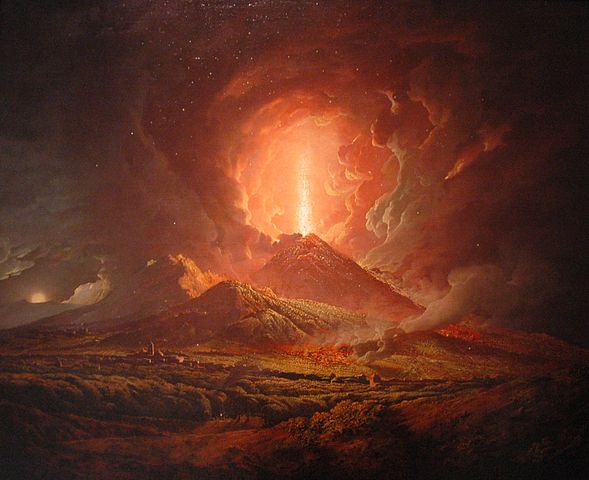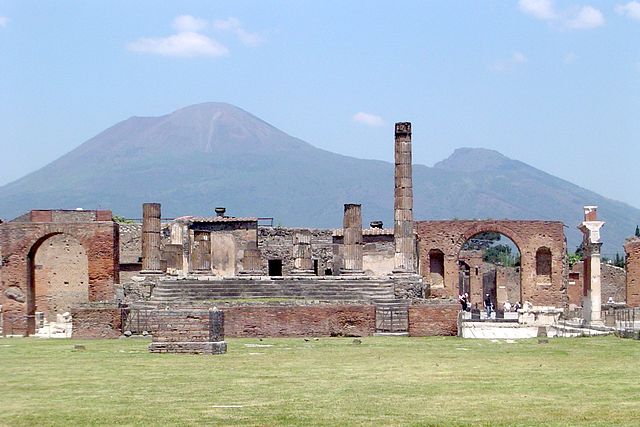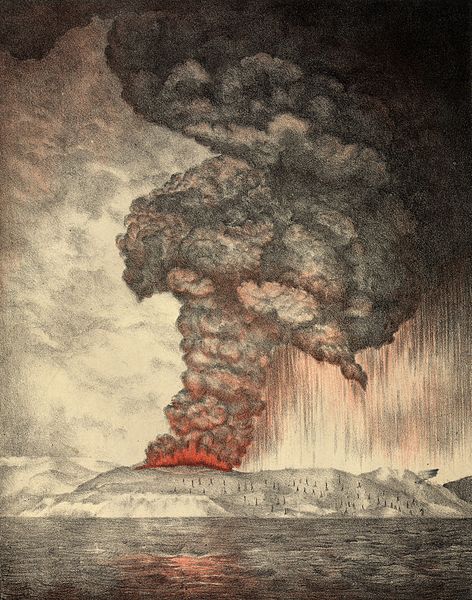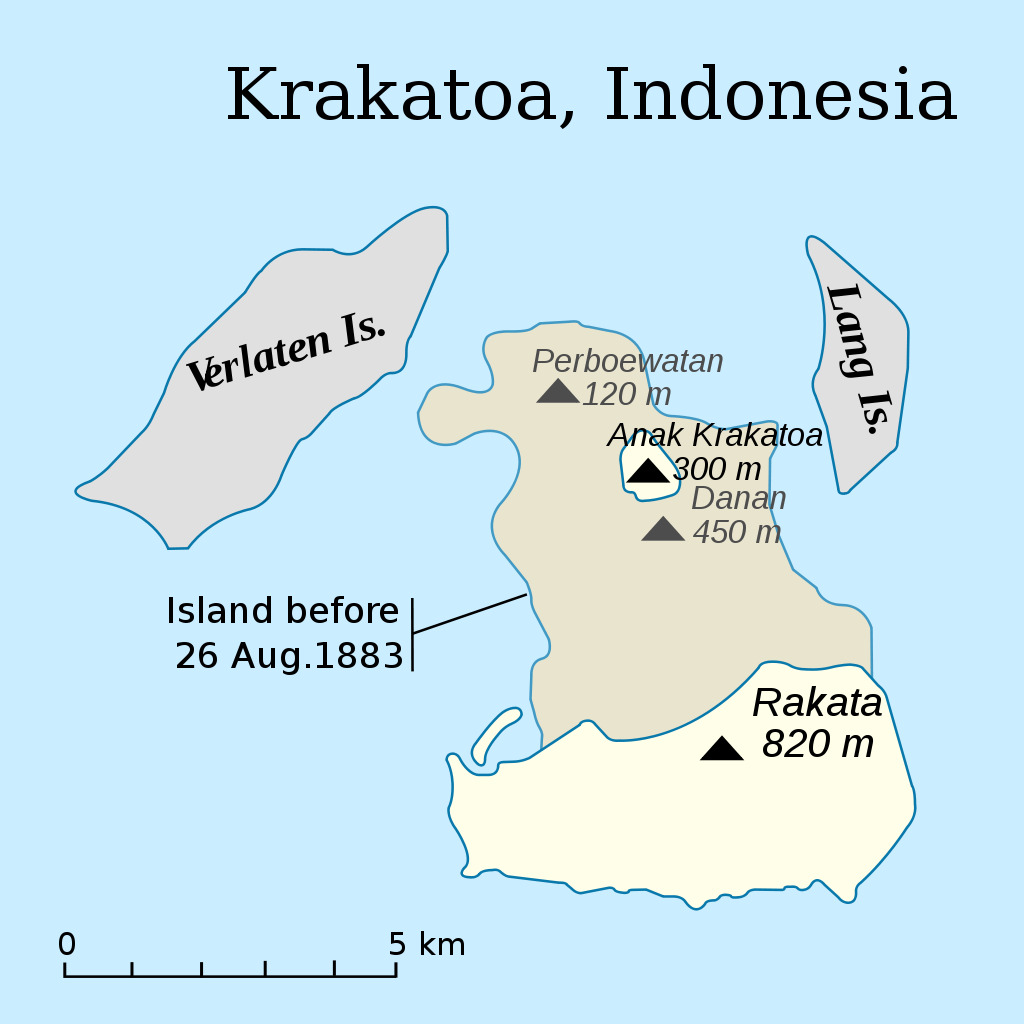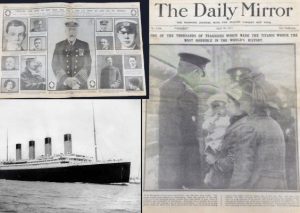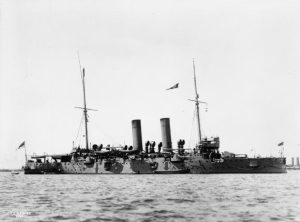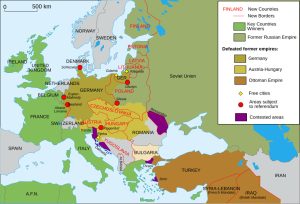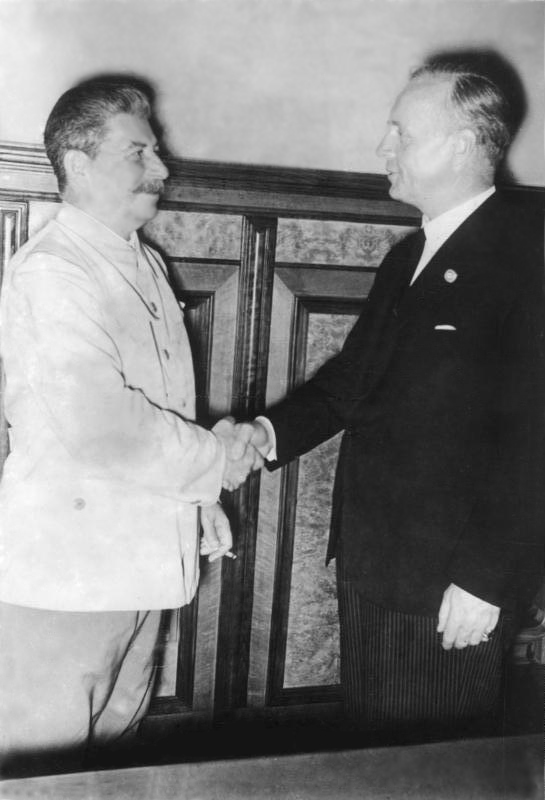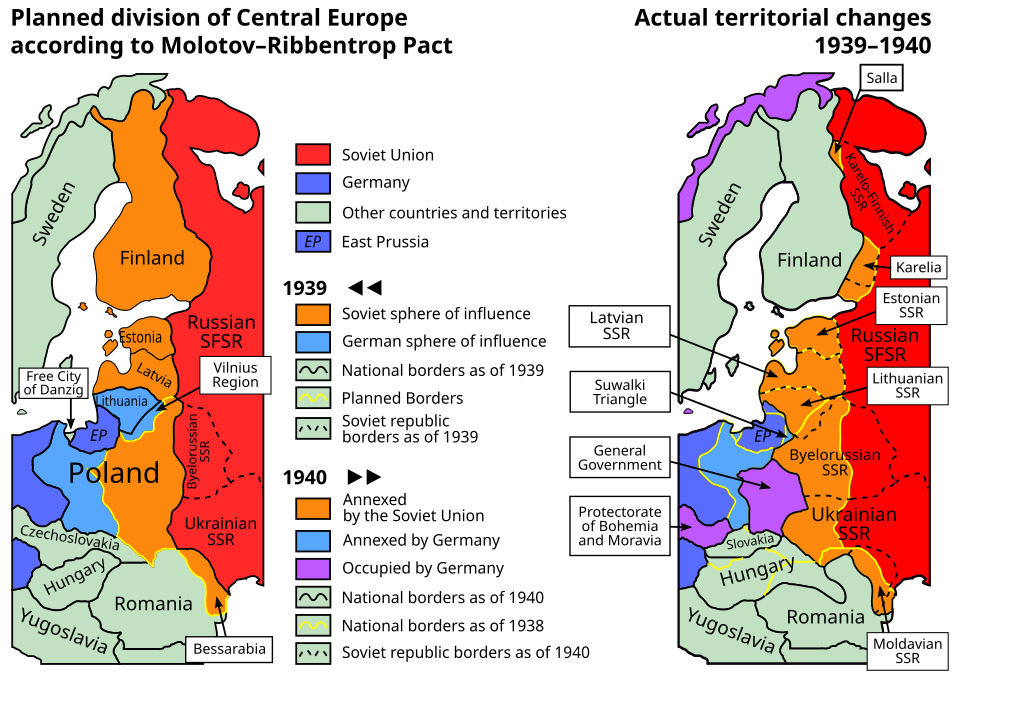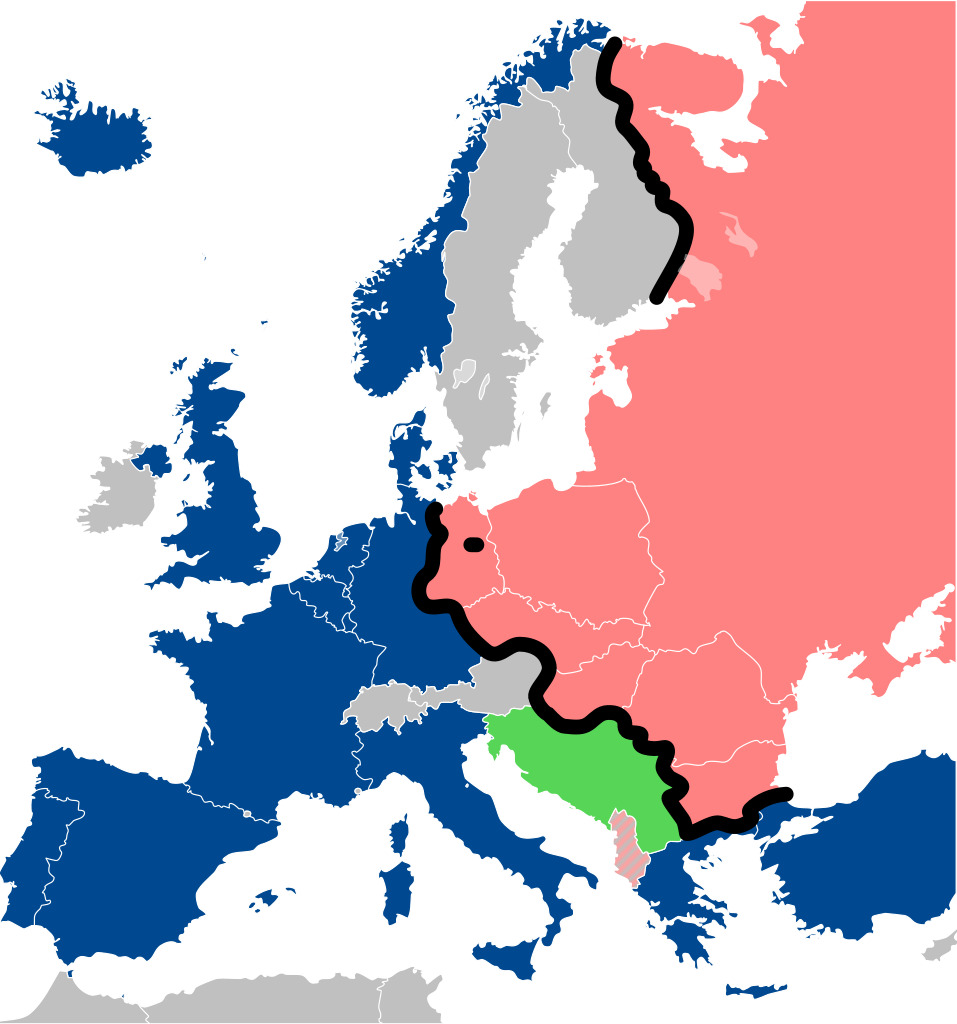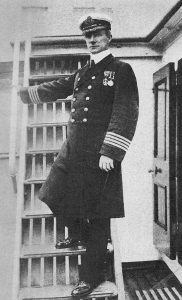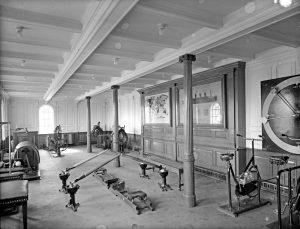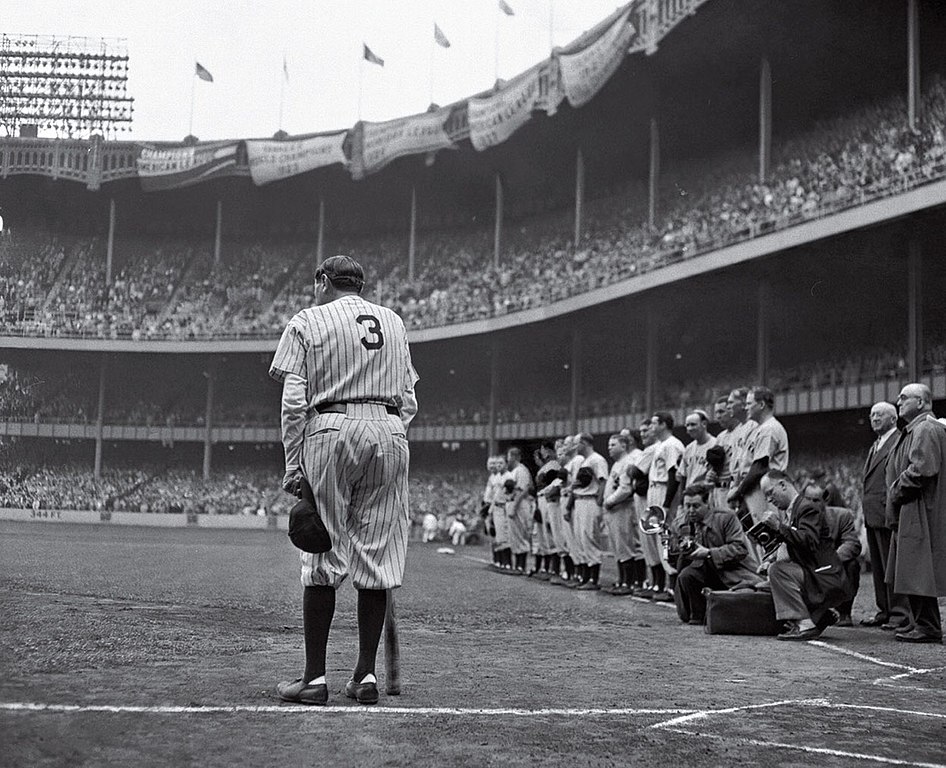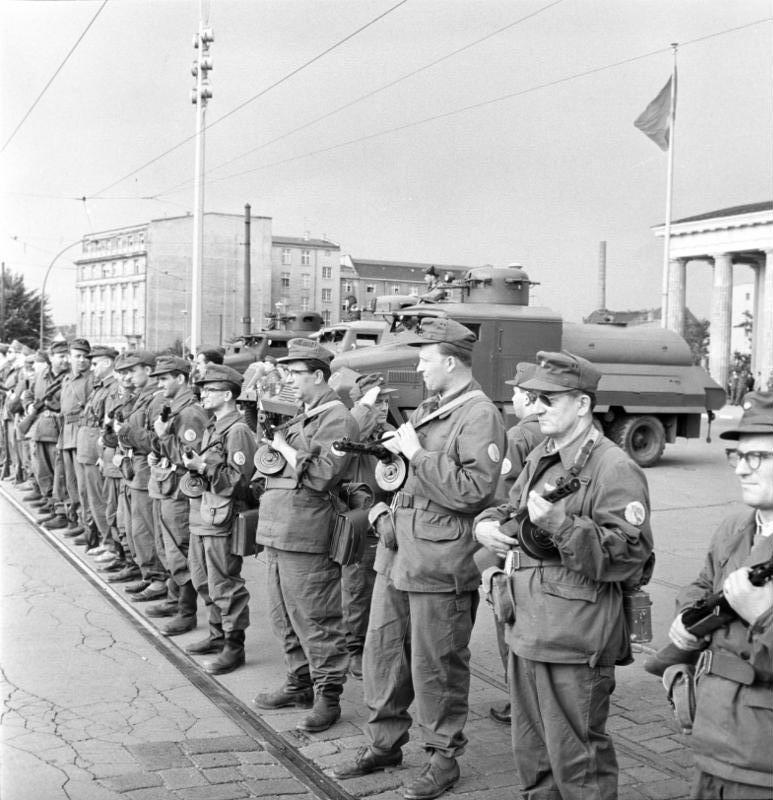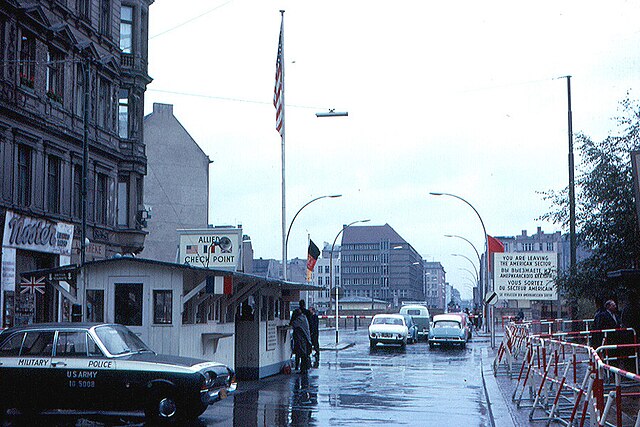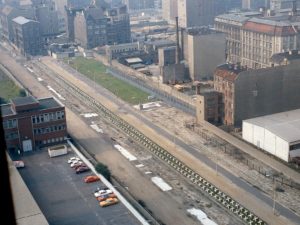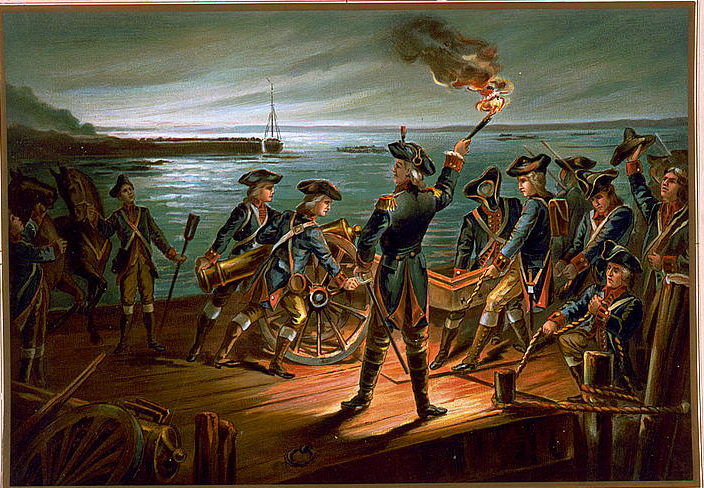
Creator: Werner Company, 1899 (Akron, Ohio)
U.S. Library of Congress, digital id#cph 3g03362 //hdl.loc.gov/loc.pnp/cph.3g03362
New York had a pivotal role in the American colonies and the American Revolution. Its central position made it vital to commerce and communication with the north and south colonies. This made it a key strategic location for both the British and American forces. General George Washington knew the British would target New York City, so he transferred the Continental Army to the city to turn back or slow down the British forces that would come. Fortifications were established in stages. Many of Washington’s troops were green, never been far from home, nor served in the military before. Washington split his forces between Brooklyn and Manhattan. This made reinforcement difficult and left a hole open at the Jamaica Pass the British would exploit.
When the British fleet arrived in June, it brought 20,000 British infantry that disembarked on Staten Island. The warships also could dominate the waterways that cut through New York City. The British sent 10,000 soldiers to Long Island, but Washington did not recombine his forces to counter it. Using a distraction, British General William Howe marched into position and on 27 August launch the attack on the Americans. Fighting raged on Guan Heights in the south and at Brooklyn Heights in the north, with the bloodiest fighting at Battle Pass where hand to hand fighting between Americans and Hessian mercenaries took place. The Americans are forced to withdraw to Brooklyn Heights. A countercharge led by 400 Marylanders would allow their comrades to escape. They would later be remembered as the Maryland 400 for their bravery. When the sun went down, the British had defeated the Americans but held off further attacks until the next day.
General Washington’s options were to surrender or evacuate at this point. While the battle had been lost, the spirit of the revolution was not dimmed. He ordered an evacuation of the troops at night, with British forces not that far away. By all accounts he was calm, authoritative, and in control of the situation. And he was aided in this task by a unique group of individuals called the Marbleheaders. They had worked together as a team fishing in the icy waters of the North Atlantic. So, they understood the weather, tides and time when sailing. Under the leadership of Colonel John Glover, this group using any sailing or rowing vessel they could find, worked to move Washington’s army across the East River to safety. It was no mean feat with British forces all around them. Oars were covered in cloth to prevent making noise in the water, everyone was told to stay quiet and not cough. They used minimal lighting and did not tell the soldiers what was going on until the last minute (this was to prevent the British from finding out).
They moved all the horses, ammunition, and cannon first. Then all the injured and wounded were transported. And then the evacuation began at 10 pm of the troops. Both the tide and winds were in their favor and the water was calm. When the tide changed, it became more difficult to keep the boats from going off-course on the return trips. The Marbleheaders had to really work hard to not loose control of their vessels. Around midnight, the winds shifted making the use of sloops (which used sails rather than oars) possible. Some chaos began to erupt at the embarkation point as soldiers started to rush to the boats. Washington seeing men trying to fight for a place on the boats, threatened to sink the ship unless the men who had pushed others aside got out. This restored the calm and shows how the proper use of leadership in such exacting times can work. The evacuation took all night and was still not done by the morning on 30 August. They had accomplished an impossible task of transporting thousands of men in just nine hours. Dawn though saw Americans still manning the trenches and it spelled doom for them when the British attacked.
Then quite suddenly a thick fog appeared and cloaked the escape. Those escaping in the early morning commented on how smooth the water was. The fog came at exactly the right time and place to remove the remaining American troops to safety across the East River. Washington oversaw the retreat and encouraged his men staying ashore until the last boat was being loaded. At that point he boarded and headed across the river. Thanks to the fog, and the lack of any alarm received by the British, Washington was able to evacuate his entire army leaving the British to find them gone.
While the British defeated Americans at the Battle of Brooklyn Heights (and would hold New York till 1783), the remarkable escape of Washington’s troops would be well regarded both for the incredible evacuation and the leadership of Washington himself. Far from dispiriting the troops or the cause, it became a source of great inspiration, and many believe the hand of God was involved as well. The fame of the Marbleheaders in being able to make the crossing possible would spread. More importantly confidence in George Washington as a capable military leader would result. He made a mistake in dividing his forces, but his remarkable leadership to save his troops would show he was a military leader both the people and his troops could rely on.
Sources
The American Revolution – (The Battle of Long Island (Brooklyn Heights)). (n.d.). http://theamericanrevolution.org/battledetail.aspx?battle=8
Brooklyn. (n.d.). American Battlefield Trust. https://www.battlefields.org/learn/revolutionary-war/battles/brooklyn
Battle of Brooklyn – The Old Stone House in Brooklyn. (2024, February 16). The Old Stone House in Brooklyn. https://theoldstonehouse.org/history/battle-of-brooklyn/
Suggested Reading
O’Donnell, P. K. (2017b). Washington’s Immortals: The Untold Story of an Elite Regiment Who Changed The Course Of The Revolution. Grove Press. This book does something rare and takes you back to those days with a skill and acumen few writers have. This is not a dry recitation of history, but an exploration of all the factors and people who played a role in the revolution that unfolded. It blends neatly stories about the many individuals, why they choose to revolt, military history of the battle, and very interesting details of a small band of hardy sailors that knew the waters well to give Washington the key to escape from New York. A must read if you want to delve into the people and their motivations for their desire to revolt. And a lot of military details skillfully intertwined so you never get bogged down.
Titanic News Channel is a participant in the Amazon Services LLC Associates Program, an affiliate advertising program designed to provide a means for sites to earn advertising fees by advertising and linking to Amazon.com.

